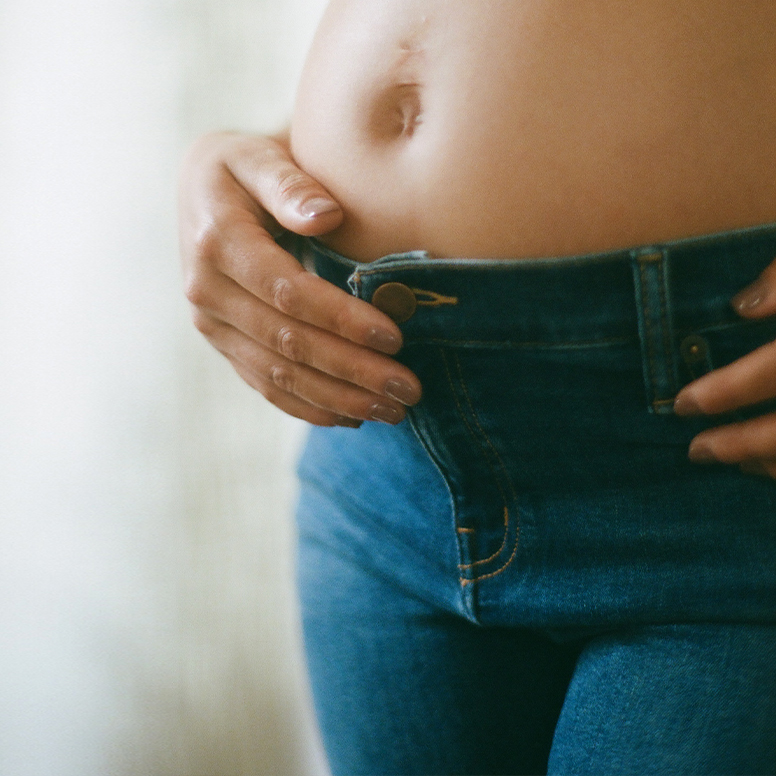There’s a reason that pregnancy and childbirth are referred to as a miracle. There’s so much that goes into it.
We learned the details at some point or another in health class and then probably forgot most of it until actually becoming pregnant. And that’s when it hits, like, “Whoa. This baby-making business is crazy,” as you compare the dozens of different pregnancy tests in the family planning aisle of your grocery store.
A woman’s body is straight-up amazing. It’s miraculous down to the molecular level, and very little compares to the intricate and beautiful process of creating a child. Even the most perfect slice of avocado toast dulls in comparison.
Thanks to science and advancements in healthcare, we know more about women’s health than ever before. There are certain aspects of pregnancy that we can predict with high degrees of accuracy. We’ve come up with ways to monitor the fertility process, but even then, it can get confusing.
This article is aimed at clarifying just one aspect of the vast subject of fertility: Can you get pregnant after ovulation?
An Ovulation Rundown
Ovulation is a complex process with several moving parts and variables at play. Understanding your ovulation cycle is vital if you’re trying to get pregnant or trying to avoid pregnancy for the time being.
Join HATCH as we cover the basics, made nice and simple. You can use this information to make informed decisions that affect your chances of becoming pregnant.
What is Ovulation?
The process in which a mature egg is released from the ovary is called ovulation. The egg then moves down the fallopian tube, hanging out for 12 to 24 hours, waiting to be fertilized. To be fertilized, it needs to be greeted and chivalrously courted by a sperm.
The sperm may already be there waiting for the egg. After sex, sperm can live inside the female reproductive system for as many as five days. Or, the sperm may arrive in the nick of time, after the egg has been dropped, to sweep them off their feet. If the embryo manages to implant itself into the uterine lining — it looks like a bun is cooking.
If it all works out, you may be rocking a cute maternity dress before you know it.
The Fertility Window
Ovulation is part of a larger process known as your cycle or period. Your period lasts, on average, 28-32 days long and may vary from month to month. During this 28-day cycle, there is a window of time known as the fertility window. Sex during ovulation represents the highest chance of seeing that pink positive result.
The fertility window represents your best chances of conceiving. These fertile days typically occur 12-14 days before the start of a new cycle. When counting, the first day of your period is “Cycle Day 1.” This cycle will end on the first day of your next period.
Fertility awareness and tracking your cycle length are vital if you’re trying to get pregnant or if having a kid isn’t on your to-do list at the moment.
People usually fall under one of the two categories, either trying to conceive or not. Contraception has many approaches, including birth control, but keeping track of your time of ovulation is also a helpful technique.
No matter what, it’s still a good idea to be in tune with your fertility window!
Tracking Your Cycle
Considering the significance of the fertility window, it’s a good practice to keep track of your cycle, just like noting your favorite fashion trends.
Keeping track of your cycle can take on a few different forms. Some may like to keep track of their good old-fashioned calendar, while others might use a handy dandy mobile ovulation calculator app to keep it all organized.
Regardless of the method that you use to track your cycle, taking some notes about each period is a healthy habit. Record when your period starts and ends, how heavy you bleed, any pain you have, and how you’re feeling mentally and emotionally. Doctors and your OB-GYN will ask you about this information as they assess your health.
What Are the Signs of Ovulation?
Some signs of ovulation include:
- Changes in cervical mucus (which helps sperm live longer)
- Vaginal secretion that looks similar to egg whites (brunch, anyone?)
- Breast tenderness
- Basal Body Temperature increases
- Your ovulation test tells you
So, Can You Get Pregnant After Ovulation or Not?
Can you or can’t you get pregnant after ovulation? Let’s break it down.
Here’s what we know so far:
- Ovulation is the most fertile time of the cycle
- The egg and the sperm both need to be present in the fallopian tubes.
- Sperm can survive in the fallopian tube for up to five days.
- Upon ovulation, the egg will survive between 12 to 24 hours.
Using these three bits of information, we can deduce whether or not pregnancy after ovulation is possible. It also informs us about how you might increase your chances of fertility.
The Consensus: Yes, You Can Get Pregnant Before or After Ovulation
Technically, your best chance of conceiving occurs during ovulation, but that doesn’t mean you should wait to have sex. It’s not as likely, but you still have a chance of getting pregnant before or after ovulation.
Think about it: ovulation is when the egg travels to the fallopian tubes. The egg has to be there to meet the sperm and make a cute little baby.
In any given month, if you happen to become pregnant, your best bet is within the 12-24 hour period in which the egg is chilling in the tube.
However, however, however (three “howevers” because this is important): That doesn’t mean that there is only one day a month that sexual intercourse could make you pregnant.
Since sperm can survive for up to five days when trapped in cervical mucus, you could have sex on Wednesday and become pregnant on a Saturday. It all really depends on when the egg drops and if the sperm is still viable.
Even if that’s the only time you have sex that month, you could still get pregnant.
Now, if you had had sex only one day prior… The sperm would no longer have been there once the egg showed up. In that case, you wouldn’t be pregnant, and the egg would deteriorate and pass during menstruation.
How Can You Increase Fertility?
If you’re trying for a baby, there are several things you can do to increase fertility.
For one, you can talk to your doctor and make sure that you’re up and running in good health. You can make lifestyle choices, like eating natural foods that help increase fertility. Exercise helps as well.
Is that it, or are we missing something?
Oh, yes, you can get intimate a little more often.
Remember how long sperm survives in the fallopian tube? Five days. That’s a long time. Think about how many series you could binge-watch while wearing a cozy nightgown in five days.
If you’re trying for a baby, have lots of sex during the five days before you ovulate. That way, there will be a bunch of swimmers all competing for the single, most beautiful, most wonderful egg they’re ever going to get a chance at fertilizing.
Can You Still Get Pregnant if You Only Have Sex After Ovulation?
You bet. You can still become pregnant from having sex after ovulation, but only if it’s within that 12-24 hour period that the egg is still chilling.
Once the egg is gone, you can rendezvous to your heart’s content, but you’re not going to get pregnant until your next fertility window.
Relax and Keep Track
In conclusion, we return to where we started. It’s a lot. It’s a lot to keep track of. It can be confusing to understand, especially for someone who gets pregnant unexpectedly and is grasping to understand how it could be possible.
If that happens to be you, please know that you’re not alone, no matter how alone you might be feeling. There are many organizations that can provide you with helpful tools and resources.
Keeping in touch with yourself and tracking your cycle is a healthy practice and a huge help in navigating your fertility. Knowing when you’re ovulating and being aware of your fertility window is one of the most practical ways to help increase your chances of pregnancy or save it for another time.
Sources:






